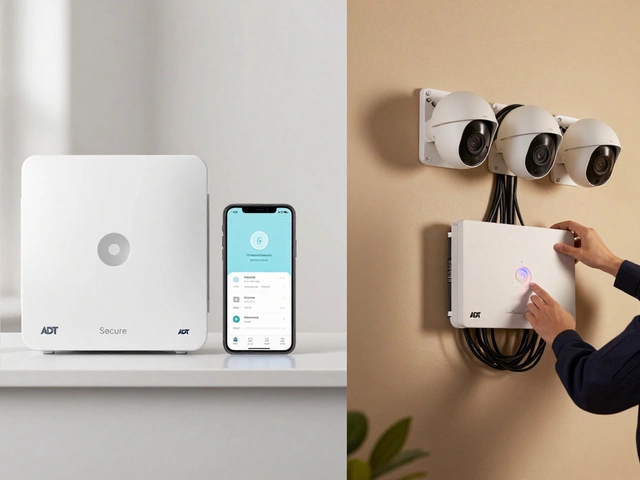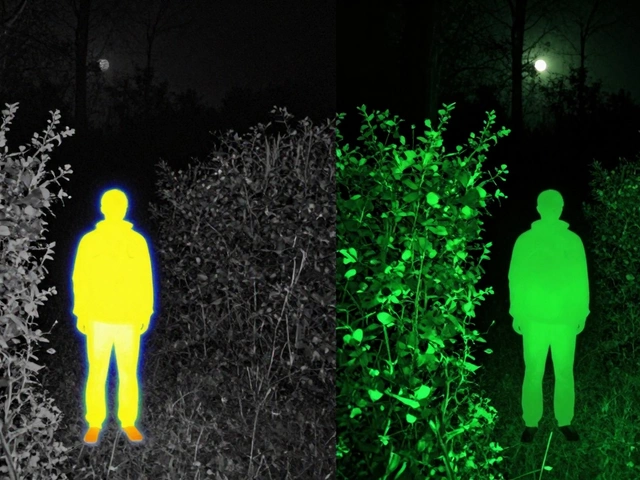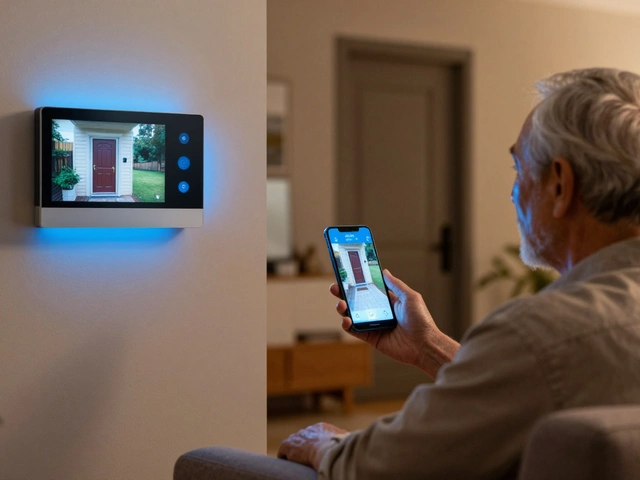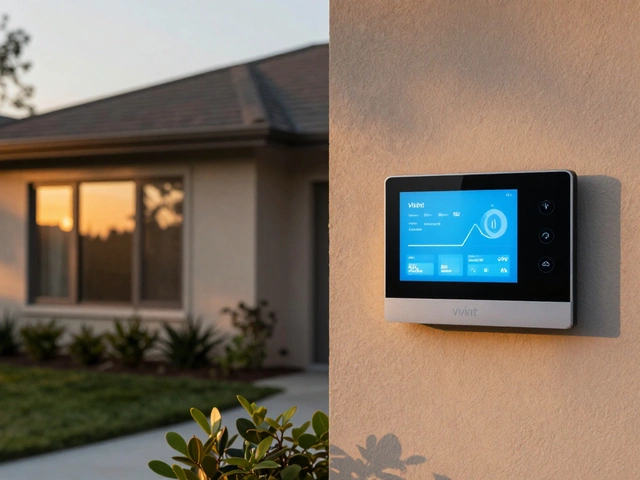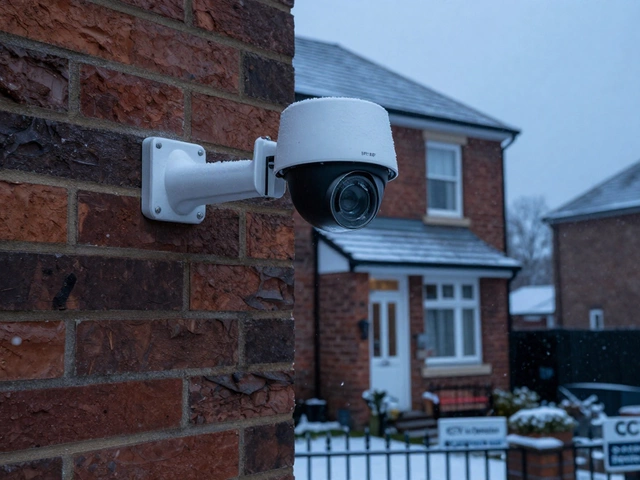Baby Monitor Decision Calculator
Compare Your Needs
Answer these questions to find the best monitor for your situation
Results will appear here after calculation
When you first set up a baby monitor, you might think it’s just about hearing your little one cry. But by 2025, the choice between a Wi-Fi baby monitor and a non-Wi-Fi model isn’t just about convenience-it’s about safety, reliability, and peace of mind. And the answer isn’t as simple as ‘more tech is better.’
What Wi-Fi baby monitors actually do-and what they risk
Wi-Fi baby monitors let you check on your baby from anywhere. Whether you’re at work, running errands, or even on vacation, you can pull up a live video feed on your phone. That sounds amazing, right? And for many parents, it is. Brands like Nanit Pro, Eufy SpaceView, and Motorola Halo+ offer 1080p video, temperature sensors, lullabies, and even sleep tracking-all through an app. But here’s the catch: every time you connect a device to the internet, you open a door. In 2022, researchers found that 78% of tested Wi-Fi baby monitors had at least one critical security flaw. Some used default passwords that never changed. Others sent video streams unencrypted. There are real stories: one parent in Sheffield heard a stranger’s voice shouting through their Motorola Halo+ in July 2023. The company confirmed it was unauthorized access. The VTech breach in 2015-where hackers stole data from 6.4 million families-isn’t just a footnote. It’s a warning. Even if your monitor doesn’t store data in the cloud, if it connects to your home network, it’s part of your digital footprint. And if your Wi-Fi is weak or your router outdated, that monitor becomes an easy target.Non-Wi-Fi monitors: the old-school option that still wins
Then there’s the non-Wi-Fi baby monitor. These use radio frequencies-usually 1.9GHz DECT or 2.4GHz FHSS-to send audio and video directly from the nursery to the parent unit. No internet. No app. No cloud. Just a clear, private signal. Models like the Infant Optics DXR-8 Pro and VTech VM321 have been trusted for years. Parents love them because they just work. No lag. No buffering. No “connection lost” messages when the Wi-Fi goes down during a storm. One user wrote on Amazon: “Works perfectly through 3 walls in our 2,300 sq ft home.” That’s the kind of reliability you can’t buy with features. Security? It’s built in. To hack a non-Wi-Fi monitor, you’d need to be physically close-within 100 to 500 feet-and have specialized equipment. Even then, most use AES-128 encryption or frequency-hopping tech that changes channels 100 times per second. It’s not impossible, but it’s wildly impractical. Unlike Wi-Fi monitors, which can be hacked from across the world, these are only vulnerable if someone’s standing outside your window with a radio scanner.Performance: speed, lag, and what really matters at 3 a.m.
Let’s talk about what happens when your baby wakes up crying at 3 a.m. You grab your phone. You open the app. And then… you wait. Wi-Fi monitors average 3.2 seconds of lag on a strong connection. But if your internet is slow, congested, or your router is old? That lag jumps to 8.7 seconds. Eight seconds. That’s enough time for a crying baby to escalate into a full meltdown. Meanwhile, non-Wi-Fi monitors respond in under half a second. No delay. No buffering. Just instant sound and video. Battery life matters too. Wi-Fi monitors often drain faster because they’re constantly sending data to the cloud. The Infant Optics DXR-8 Pro lasts 12 hours on a single charge. Many Wi-Fi models? 6 to 8 hours. And if you’re using night vision or motion alerts? That drops even faster.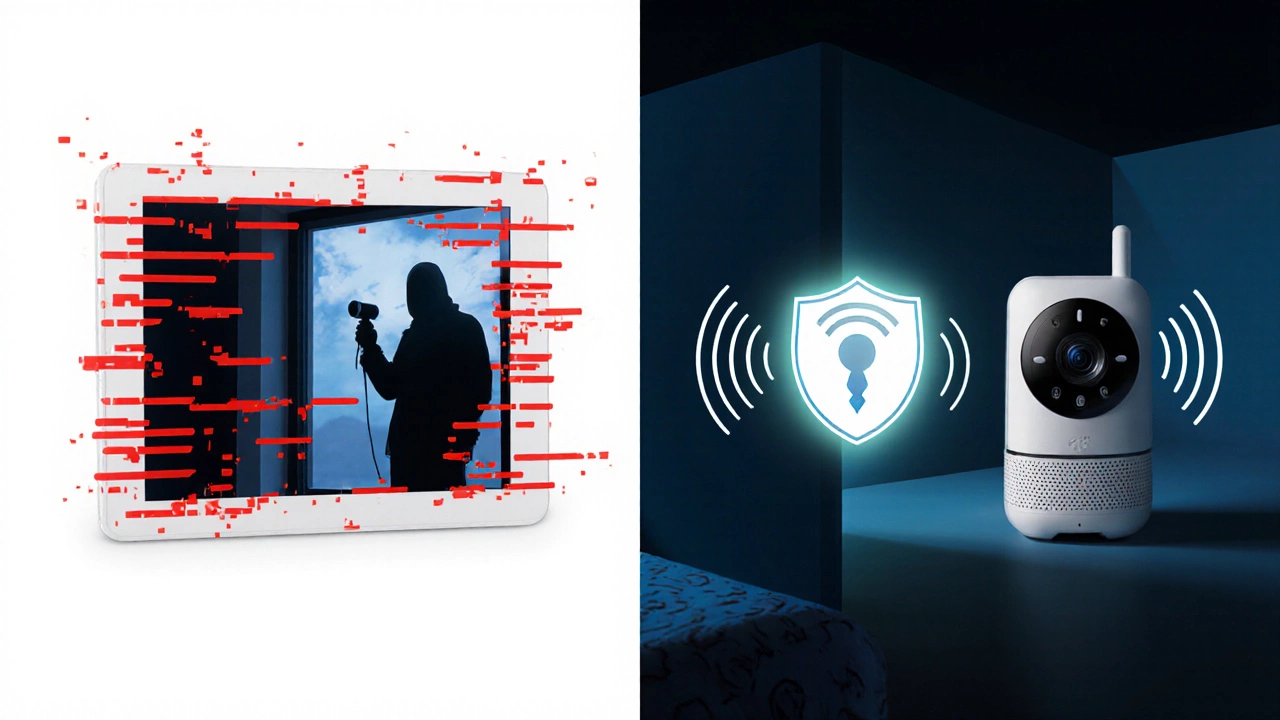
Cost isn’t just the price tag
At first glance, a non-Wi-Fi monitor like the Infant Optics DXR-8 Pro ($179.99) looks pricier than a Wyze Cam v3 ($149.99). But the real cost of a Wi-Fi monitor often hides in the fine print. Many Wi-Fi models require a subscription to save recordings, get alerts, or use advanced features. Eufy charges $4.99/month. Nanit wants $9.99/month for sleep analytics. That’s $120 a year extra. Over three years? That’s more than the price of a top-tier non-Wi-Fi monitor. Plus, Wi-Fi monitors need regular updates. If you forget to install a firmware patch, your monitor becomes vulnerable. Non-Wi-Fi models? Plug it in, turn it on, and you’re done. No updates. No passwords. No tech support calls.Who should pick Wi-Fi-and who shouldn’t
If you’re a parent who travels often, works remotely, or has family members who want to check in on the baby from another city-then a Wi-Fi monitor makes sense. You need that remote access. But even then, don’t just buy the first one you see. Look for models with local storage (no cloud required), end-to-end encryption, and two-factor authentication. Nanit’s 2023 firmware update lets you disable remote access entirely. Eufy’s new SecureCore tech keeps video encrypted on your home network-no cloud needed. These are the exceptions, not the rule. If you’re a first-time parent, live in a house with spotty internet, or just want to sleep without worrying about hackers-go non-Wi-Fi. You’re not being old-fashioned. You’re being smart. The American Academy of Pediatrics found that 73% of pediatricians recommend non-Wi-Fi monitors as the primary option for most families.
What’s changing in 2025
Regulations are catching up. The EU’s Cyber Resilience Act, which took effect in October 2023, now requires all connected baby monitors to have automatic updates and secure boot features. The UK’s Product Security and Telecommunications Infrastructure Act 2022 bans default passwords. California’s SB-327 has been around since 2020. Manufacturers are responding. New models in 2025 are starting to blend the best of both worlds: local video processing with optional secure remote access. But even these hybrids still require setup, passwords, and updates. For most parents, the simpler, more reliable option still wins.Final decision: what to buy
Here’s the short version:- Choose a non-Wi-Fi baby monitor if: You want zero hacking risk, instant response, no monthly fees, and simple setup. Best for: First-time parents, homes with unreliable internet, or anyone who values privacy over convenience.
- Choose a Wi-Fi baby monitor if: You need remote access, you’re tech-savvy, you’ll set up strong passwords and two-factor auth, and you’re willing to pay for cloud storage. Best for: Working parents, families with multiple caregivers across locations, or those who want sleep tracking and analytics.
Can a non-Wi-Fi baby monitor be hacked?
Technically, yes-but it’s extremely unlikely. Non-Wi-Fi monitors use encrypted radio signals, not the internet. To hack one, someone would need to be physically close to your home (within 100-500 feet), have specialized equipment, and bypass frequency-hopping or AES-128 encryption. This isn’t something a random hacker can do from another city. It’s far more secure than Wi-Fi models, which can be accessed from anywhere in the world.
Do Wi-Fi baby monitors need a subscription?
Many do. Brands like Nanit, Eufy, and Arlo charge $3.99 to $9.99 per month to store video clips, get motion alerts, or use sleep tracking. Without a subscription, you might only get live viewing. Always check the fine print before buying. Non-Wi-Fi monitors never require subscriptions-you pay once and own it.
What’s the best non-Wi-Fi baby monitor in 2025?
The Infant Optics DXR-8 Pro remains the top pick. It offers 720p HD video, a 1,000-foot range, interchangeable lenses, and a parent unit with a long battery life. It’s been consistently rated 4.5/5 stars by over 12,000 users. Other strong options include the VTech VM321 for its clear audio and simple design, and the Philips Avent SCD630 for its temperature sensor and nightlight.
Are Wi-Fi baby monitors safe if I use a strong password?
Strong passwords help-but they’re not enough. Many Wi-Fi monitors still have unpatched firmware, insecure cloud servers, or default settings that can be exploited. Even with a 12-character password, if the manufacturer’s app has a vulnerability, your monitor can still be breached. The 2022 SEC Consult study found that 78% of Wi-Fi monitors had critical flaws regardless of user settings. For maximum safety, avoid connecting any baby monitor to the internet unless you absolutely need remote access.
Can I use both a Wi-Fi and non-Wi-Fi monitor together?
Absolutely. Many parents use a non-Wi-Fi monitor as their main device for overnight and daily use, then add a Wi-Fi camera in the nursery for daytime checks when someone else is home. This gives you the best of both: security when it matters most, and convenience when you need it. Just keep the Wi-Fi camera on a separate network if possible, and turn it off when not in use.
What’s the biggest mistake parents make with Wi-Fi baby monitors?
Using the default password. Nearly every Wi-Fi baby monitor comes with a default username and password like “admin/admin” or “12345678.” If you don’t change it immediately, you’re inviting hackers in. Other common mistakes: not updating firmware, connecting the monitor to your main home network instead of a guest network, and enabling cloud storage without understanding what data is being stored or who can access it.


